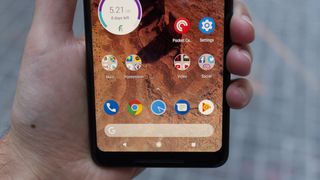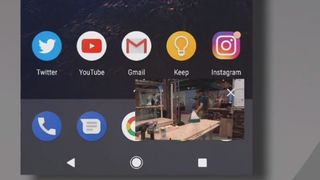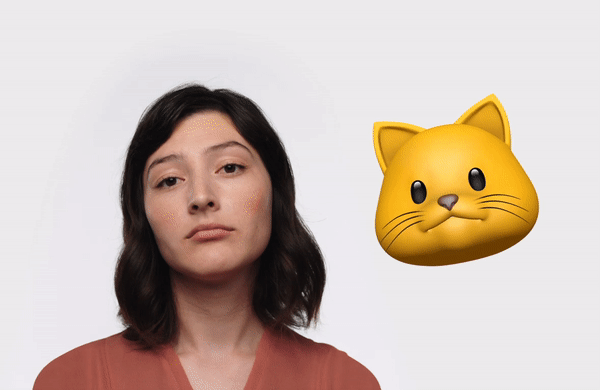
Unless you’re rocking a Pixel or Pixel 2 chances are you don’t even have Android Oreo on your phone yet, but it’s never too early to start thinking about Android P (or Android 9, as it's likely to be also known as).
Little is known about the next version of Google’s mobile operating system, but we’re already hearing rumors that Google has started working on Android P, and that it's being made fresh to support phones with notches, as well as devices that will sport more than one display or a flexible one, like the rumored Samsung Galaxy X.
As always, we’ll add any new information to this article as and when we hear it.
But while we wait for more info nuggets to drop, we’ve also come up with a list of things we want from Android P, because as good as Android Oreo is there’s always room for improvement.
Cut to the chase
- What is it? The next version of Android
- When is it out? Probably August 2018
- How much will it cost? It will be a free update
Android P release date
Based on past form Google is likely to unveil Android P/Android 9 during March 2018, at which point it will probably be made available as a developer preview.
Several more beta versions are likely to follow, ending with a final, finished release in August 2018.
While it’s possible that the schedule will differ from that, it’s likely to be at least roughly along those lines, since new updates are released yearly and Android Oreo landed in August 2017.
Android P news and rumors
We don’t know much about Android P just yet, but it seems it’s already being worked on, as XDA Developers has found references to it in the Android Open Source Project.
We’ll update this section as soon as we hear any new information about Android P.

This appears to be the first known mention of Android P (credit: XDA Developers)
The latest rumor to come to the surface points to Android P's revamped design being friendly to the incoming fleet of phones with notches and distinct form factors, like the flexible Samsung Galaxy X is rumored to sport. This would then hold true for any multi-display phone to come in the future that looks like the ZTE Axon M.
What we want to see
Android is in quite a polished state by this point, but there are always improvements that can be made, such as the following things.
1. Wider, faster availability
Android has long had a fragmentation problem, with many devices stuck on very old versions and even those which will ultimately get the latest release often taking many months to do so.
With Android P we’d like to see Google push to get the update on more devices, faster. This is largely in the hands of manufacturers, but Google might be able to do something to help.
In fact, Google is already working on this somewhat with Project Treble, a feature which should mean it’s less work for manufacturers to update their devices.
It remains to be seen how much difference that will make, but we’re sure there’s more that could be done in any case.
2. Movable search bar and date widgets

Not everyone wants the same layout, hopefully Android P will address that
One of the things we typically praise about stock Android is that it’s free of bloat, but that can also mean it’s light on features, such as the ability to move the search bar and date widget.
They are currently glued to the bottom and top of the home screen respectively in the stock version of Android Oreo.
Most people will probably be happy with that, but we’d like the ability to move them anywhere on the screen with Android P, like you can with most widgets.
3. More customization
On a related note, we’d love to see more customization potential in general with Android P.
Some third-party launchers let you customize gestures, screen transitions and the like, but for the most part what you see is what you get with Android Oreo.
There’s nothing stopping you switching the stock launcher for a third-party one to gain those options, but then you lose the Oreo look and feel, so for Android P we want more customization built-in.
4. Make the Pixel Launcher available on all devices

Pixel Launcher is a slick take on Android that we want to see on more devices
While your device may get Android Oreo, it probably won’t get it as Google intended unless it’s a Pixel phone, so we’d like to see the Pixel Launcher made available for third-party handsets too, so users can choose between Google’s take on Android and that of their device’s manufacturer.
The Pixel Launcher is actually available on Google Play, but only for Google’s own devices, so with Android P we’d like to see its availability and compatibility widened.
5. Feature parity
Even once you get a new version of Android on your device, you won’t necessarily get all the features straight away.
For example, Google Assistant took a while to arrive on many devices even once they had Android Nougat, and Google Lens doesn’t come as part of the core Android Oreo update.
With Android P we’d like to see any and all features, especially big ones like those above, be made available for all devices running the software and to come as part of the core Android P update.
6. Picture-in-picture for every app

Picture-in-picture is handy, but only works with a few apps
Picture-in-picture is one of the big new features of Android Oreo, but it’s actually quite limited, with many apps not supporting it.
That may well change over time, but if it’s not fixed as part of Oreo we want to see it available for most or all video apps as part of Android P.
7. A focus on tablets
While Android is great on phones, there’s a sense that less focus has been put on the tablet experience in recent years, and that’s all the more noticeable now that Apple has launched the tablet-focused iOS 11.
Google could learn from this, and we’d like to see it add the likes of system-wide drag-and-drop and more native tablet apps with Android P. Bringing Google Assistant to tablets wouldn’t hurt either.
- We also have a wish list for Android Wear 3.0

























